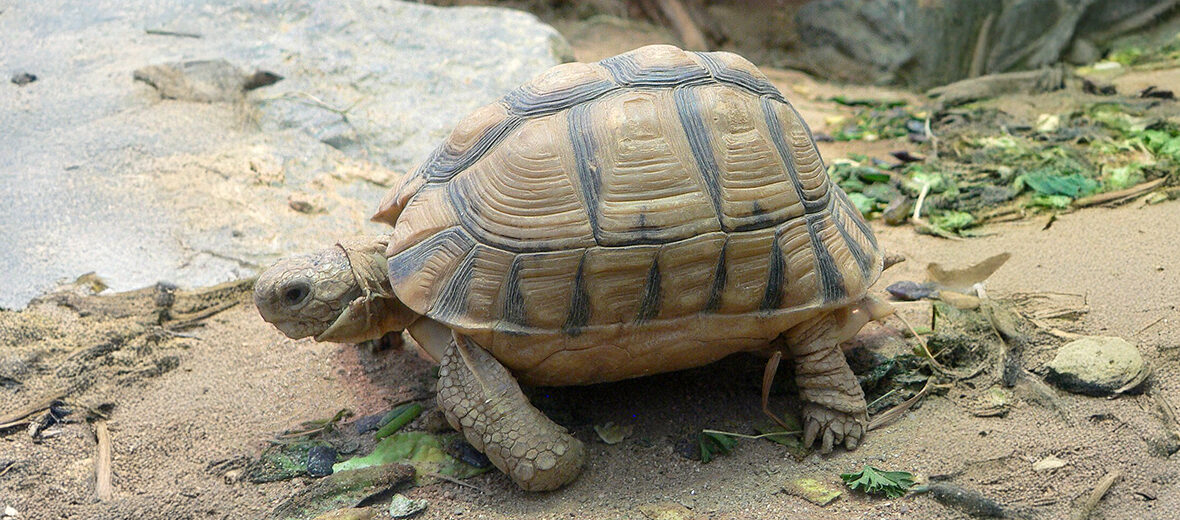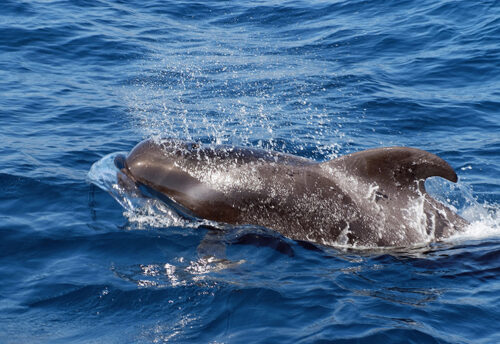
The Kleinmann’s tortoise, aka Egyptian tortoise, Leith’s tortoise, or Negev tortoise, is the smallest species of tortoise in the Northern Hemisphere. They are native to Libya and likely extinct in Egypt. These tortoises face the threats of habitat loss and destruction at the hands of residential and commercial developments, tourism, farming, ranching, dams, and general water management; hunting; trapping, for sale in the pet trade; roads and railroads, that divide their territory and can cause vehicle strike (being hit by vehicles); recreational activities, that can interrupt breeding; and invasive species, that can bring about predation and disease. The IUCN lists these little critters as Critically Endangered. Their population trend is also listed as decreasing.
First the Stats…
Scientific name: Testudo kleinmanni
Weight: Up to 1.10 lbs.
Length: Up to 5 inches
Lifespan: Up to 100+ years
Now on to the Facts!
1.) At 1 time, these tortoises were widespread. However, they currently face extinction due to the multiple factors listed above.
2.) The specific name of kleinmanni is in honor of Edouard Kleinmann, a French stockbroker who collected the holotype (a single type specimen) in 1875.
3.) Their specific name, werneri (of the synonym Testudo werneri), is in honor of Israeli herpetologist Yehudah L. Werner.
4.) They prefer desert biomes and semiarid habitats, typically rich with compact sand and gravel plains; scattered rocks; shallow, sandy wadis (valley, ravine, or channel that is dry except in the rainy season); dry woodlands; shrubby areas; and coastal salt marshes.
5.) While their diet in the wild is unknown, they prefer to eat various grasses, leaves, flowers, fruits, and vegetables in captivity.
But wait, there’s more on the Kleinmann’s tortoise!
6.) Their natural habitat receives less than 1.97 inches of rain per year.
7.) These tortoises tend to aestivate (a period of temporary dormancy for reptiles) during very cold or very hot days.
Did you know…?
Smuggling continues to be an issue, however confiscated individuals are typically used to establish captive safeguard populations.
8.) They tend to take up residency in rodent burrows.
9.) Besides chasing and ramming the female, the male also produces a mating call that sounds similar to the call of a mourning dove. By selecting this link you can hear what a mourning dove sounds like.
10.) Females lay a seasonal clutch of up to 5 eggs that hatch in up to 126 days.
But wait, there’s still more on the Kleinmann’s tortoise!
11.) On May 21, 2007, Rome’s main zoo, Bioparco, reported it had successfully bred this species from parents rescued from a smuggler’s suitcase in 2005. They are also kept and bred at several other zoos in Europe and North America.
12.) Ravens, monitor lizards, foxes, coyotes, rats, dogs, and cats are all known predators of these tortoises.
13.) It is estimated that there are fewer than 8,000 wild individuals remaining, to date.
Now a Short Kleinmann’s Tortoise Video!
Be sure to share & comment below! Also, check out the Critter Science YouTube channel. Videos added regularly!

Want to suggest a critter for me to write about? Let me know here.
Some source material acquired from: Wikipedia & IUCN
Photo credit: BS Thurner Hof



